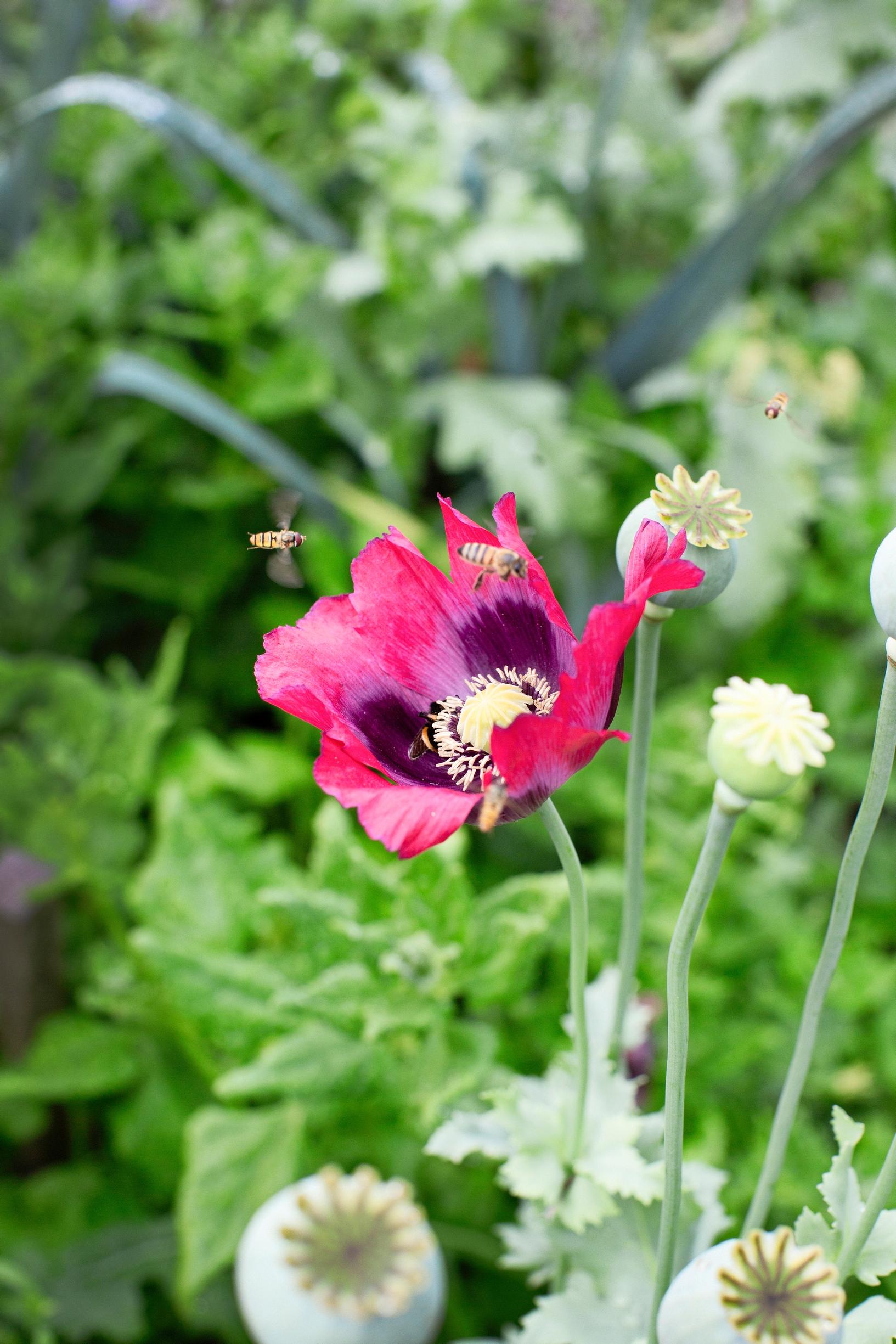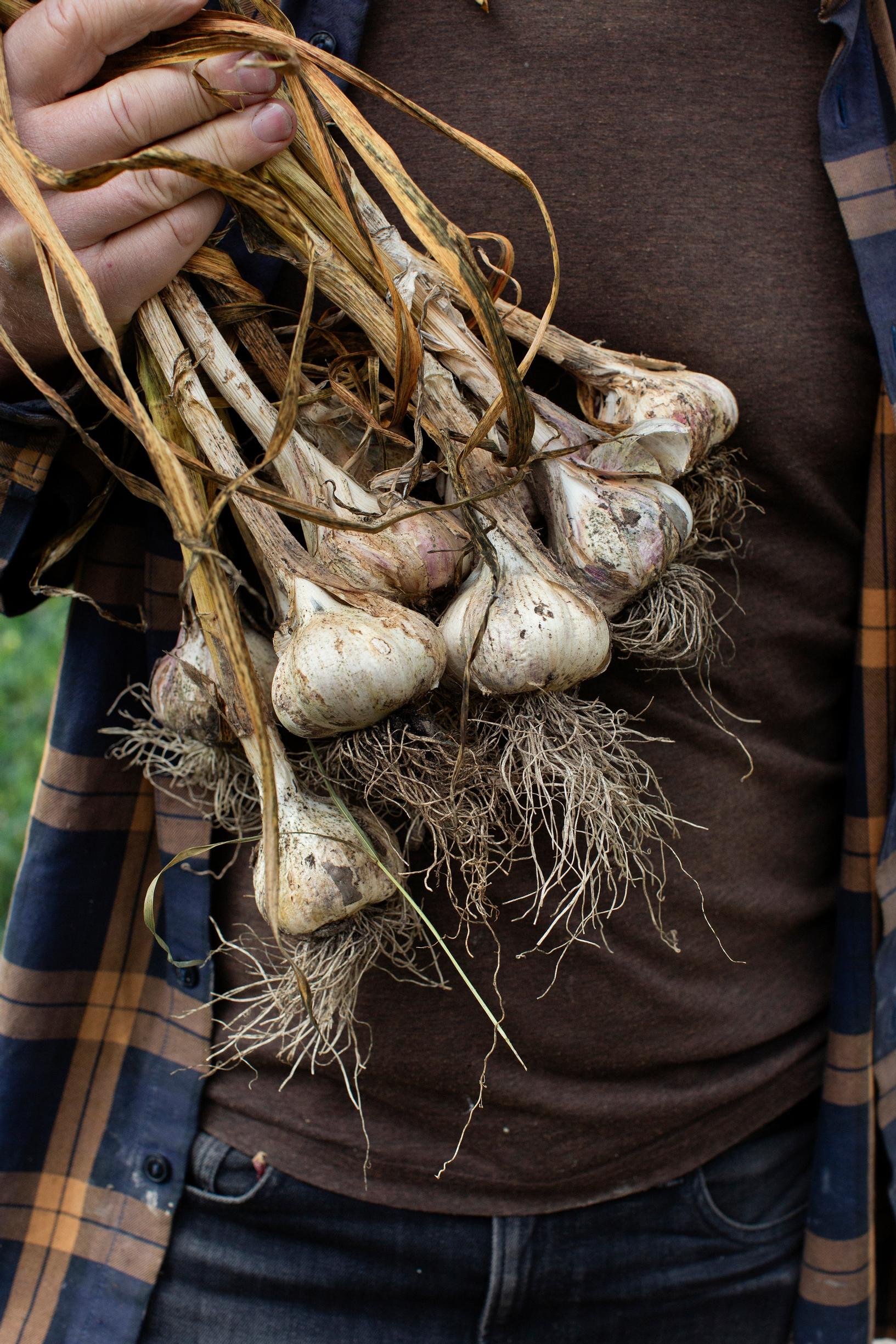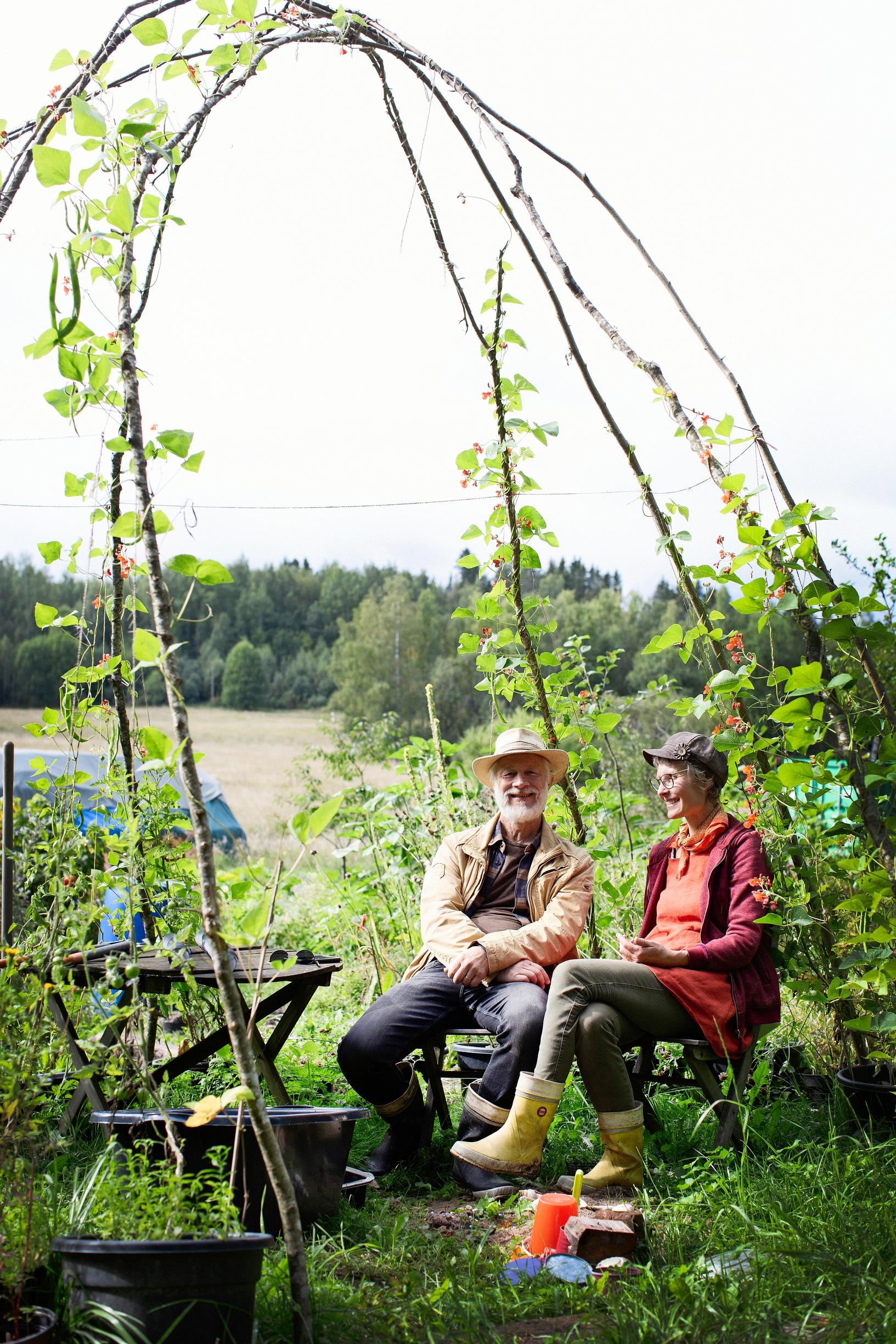
Veggies, shiitakes, and nuts from their own permaculture garden—plus edible hostas! This Finnish couple nurtures ecology on their property
Marja and Erkki strive to produce as much of their own food as possible. They cultivate their property using permaculture gardening, preserving natural resources while avoiding chemical fertilizers, pesticides, plastics, and gas-powered machines.
“Natural diversity, living soil, and a connection to nature are the most important things in my garden. Along with my spouse Erkki Pöytäniemi, I want to live without harming the Earth’s ability to support life. That’s why we follow permaculture principles, striving for a lifestyle that’s both sustainable and ecological.”
We never use chemical fertilizers, pesticides, plastics, or gas-powered tools. We keep our lawn paths tidy with a push mower and trim around trees with a battery-powered trimmer, which runs on electricity from our own solar panels.
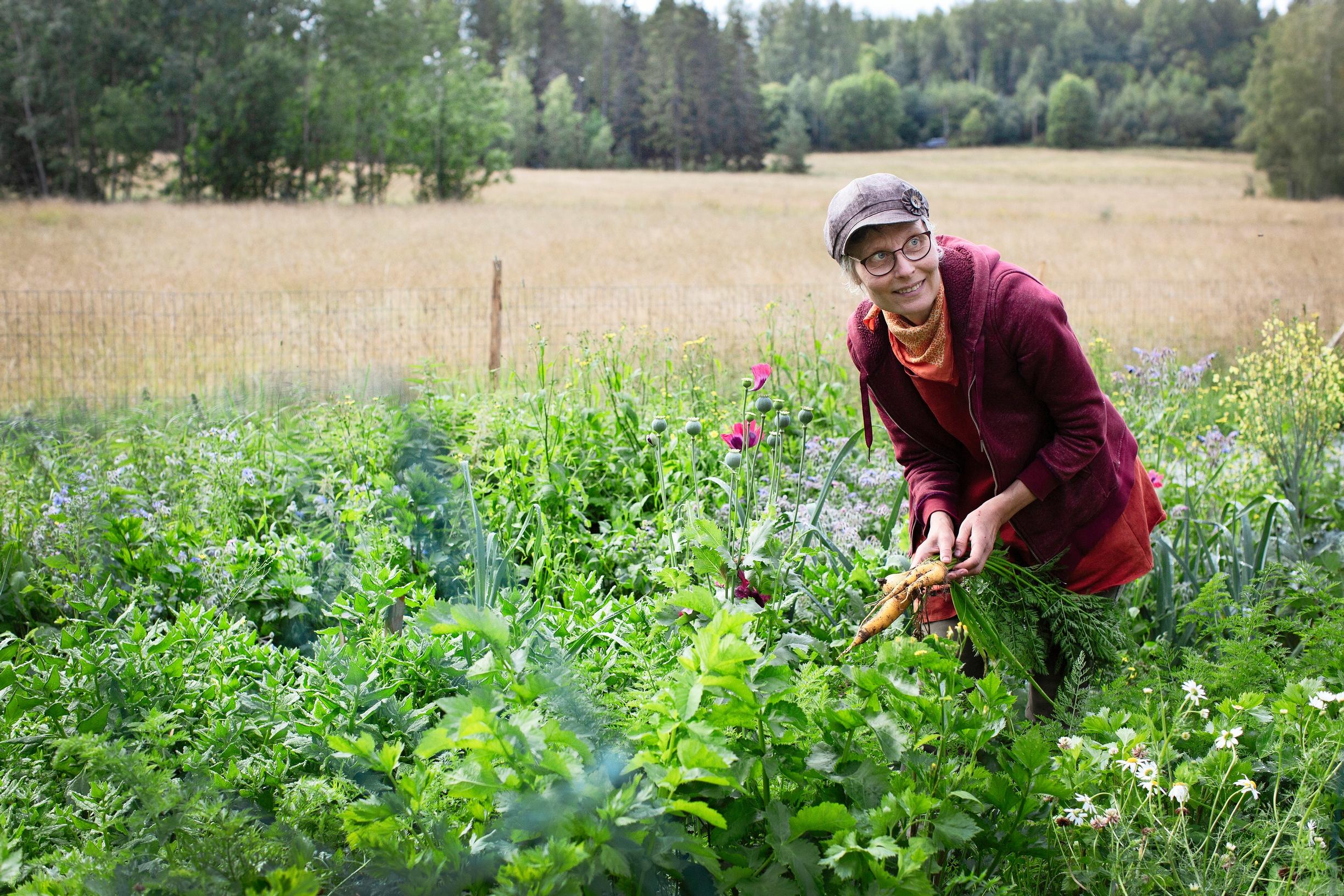
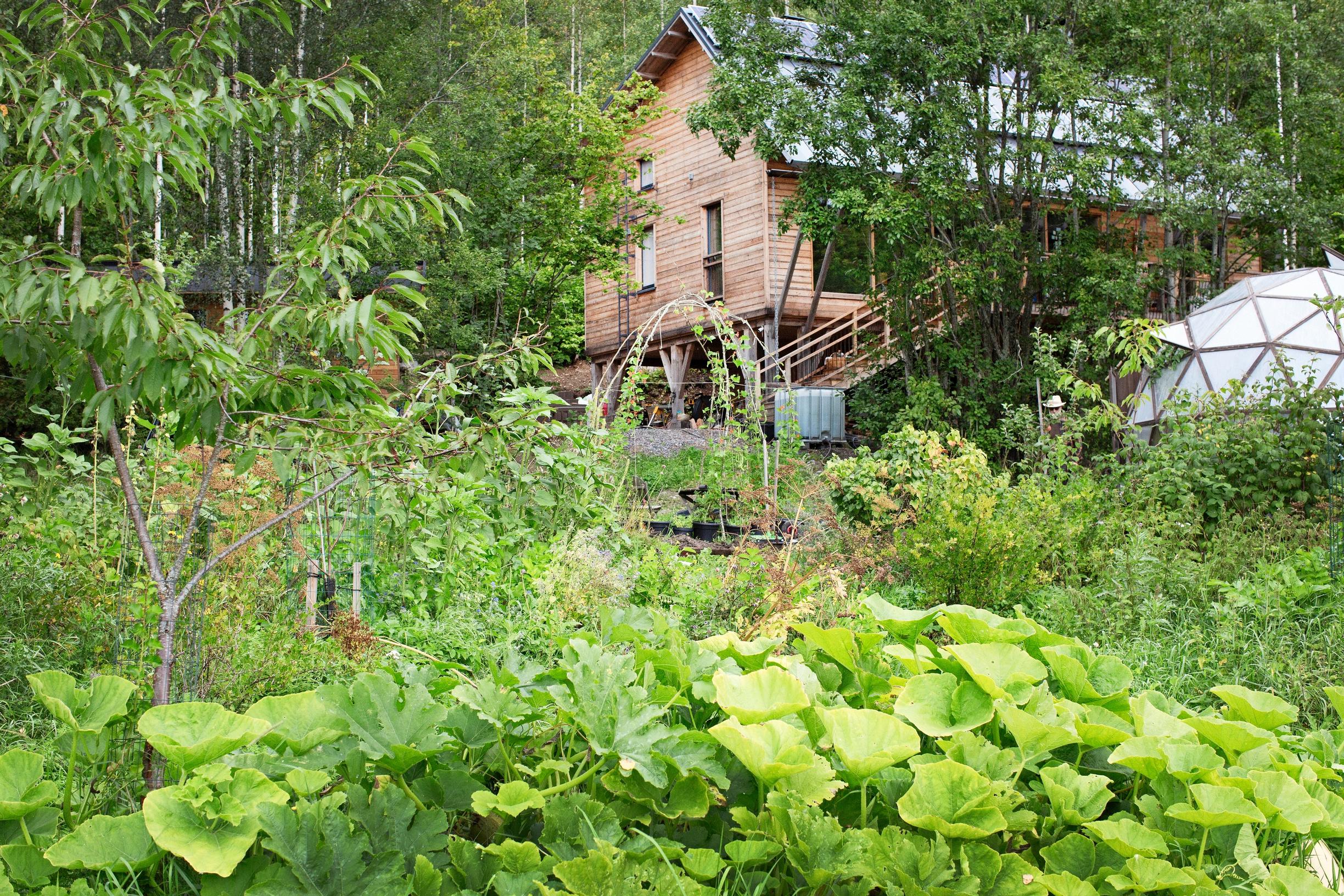
Our goal is for the garden to eventually supply most of our food. Already, we’re able to grow all the vegetables we need in the summer.
Close to the house, we’ve planted a kitchen garden with salads, Swiss chard, herbs, kale, and zucchini. Along the field’s edge, we have raised beds for root vegetables and potatoes.
In the middle of the yard stands a new geodesic greenhouse made of triangular glass panels. The dome shape balances heat and light for plants like eggplants, tomatoes, chilies, and grapes.
Behind the house in the forest, Erkki grows shiitake mushrooms in over a thousand logs, producing more than we need ourselves.
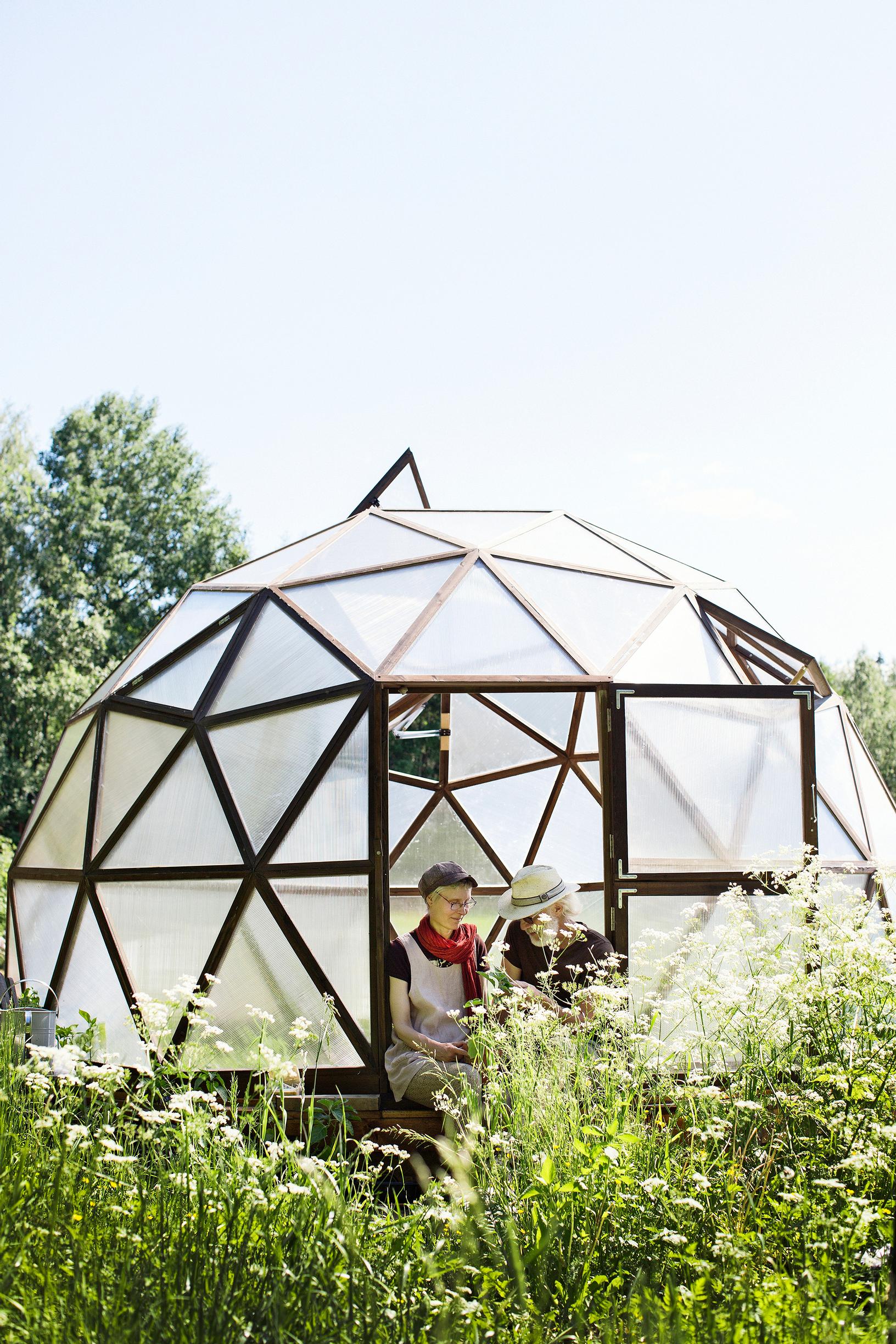
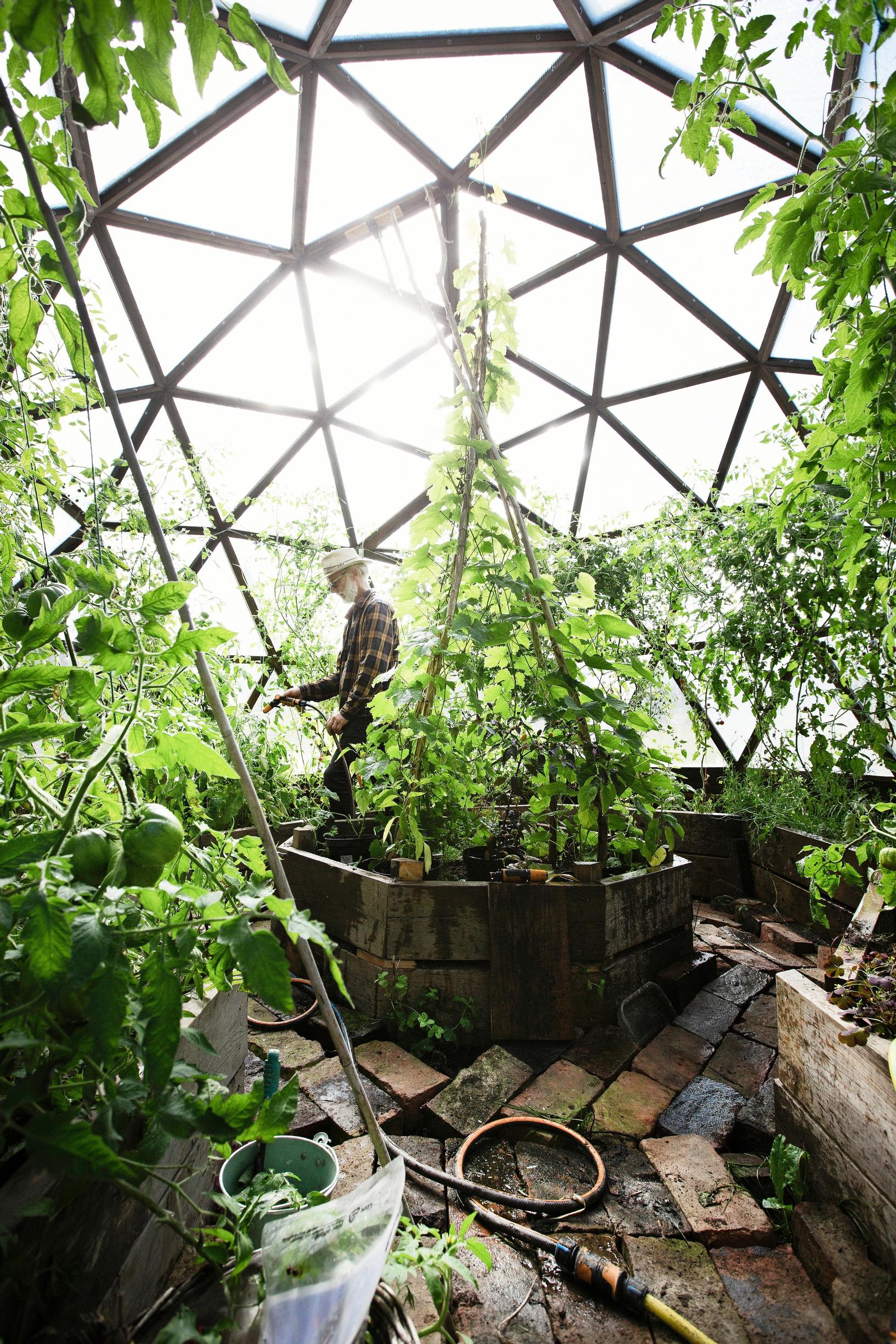
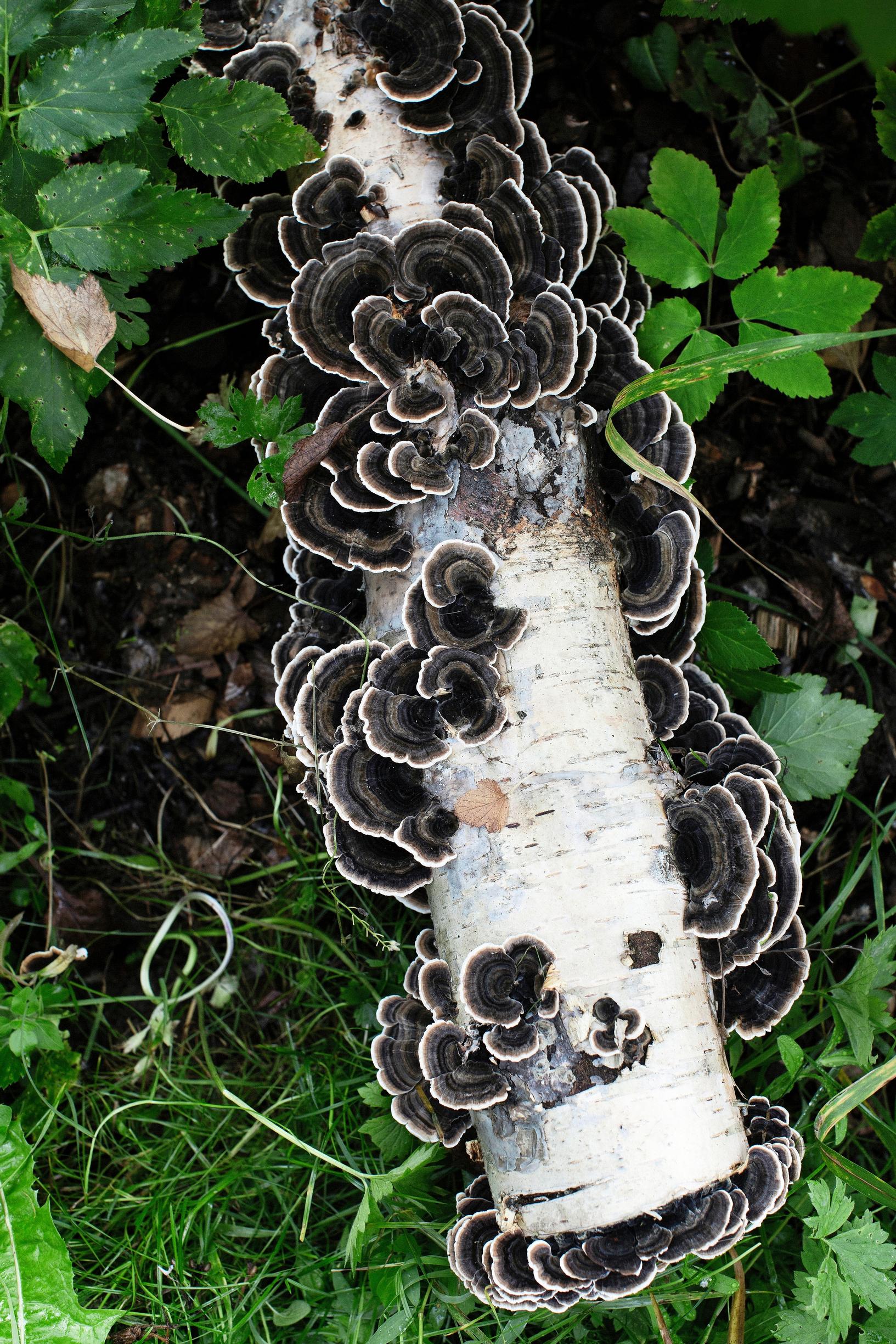
We keep our soil alive by avoiding deep tilling. Before planting, we gently loosen the surface so we don’t disturb fungal mycelia, earthworms, and other organisms. We add compost along with well-composted organic horse or sheep manure.
In our garden, everything and everyone has a place. Parsnip often self-seeds, and we usually let it grow wherever it appears. We were happy to see nettles too—they show the soil is becoming richer.
I don’t fight pests. Instead, I observe: do nettle butterfly caterpillars enjoy the nettles, or do birds eat the caterpillars first? Sometimes I relocate the caterpillars myself.
We fenced off the root vegetable patch to keep deer away.
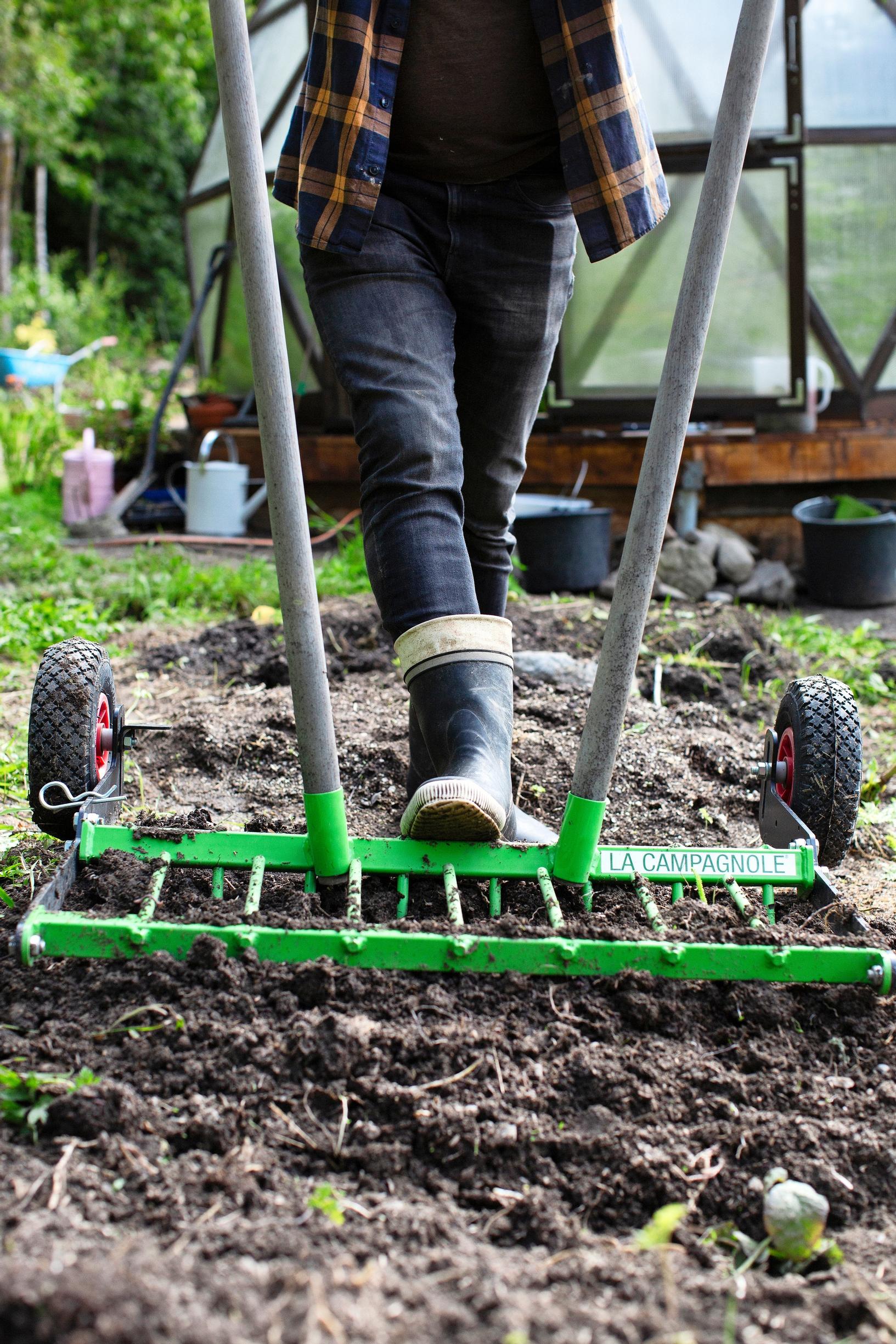
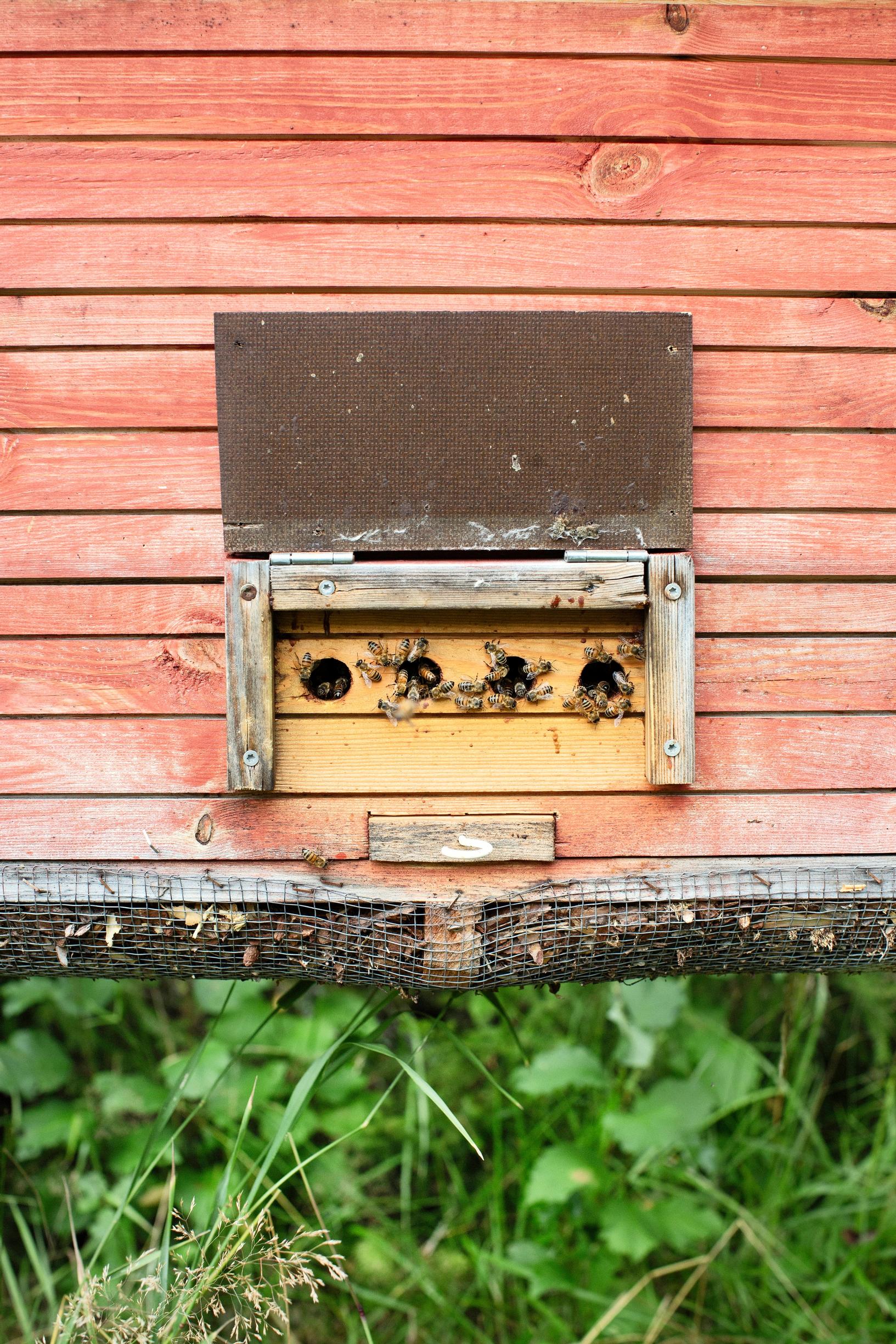
We created raised beds to avoid tilling even during construction. First, we put down cardboard to stifle grass and weeds, then piled soil and compost on top. Our soil is heavy clay, so raised beds help in growing root vegetables.
I always plant at least three companion crops in one bed—like outdoor cucumbers, beans, and sunflowers, or carrots, onions, and marigolds. That way, there’s diversity, and the plants can help each other.
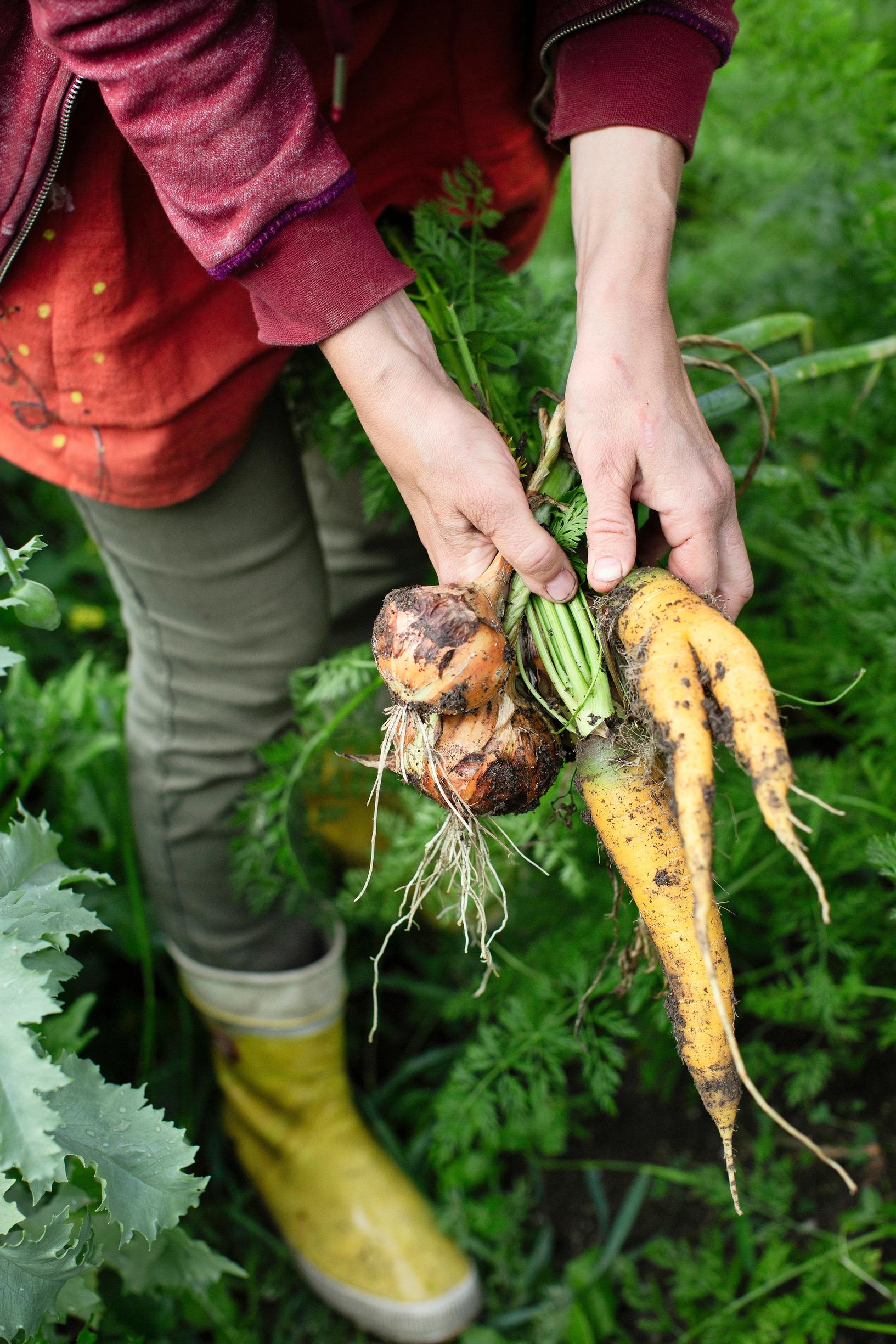
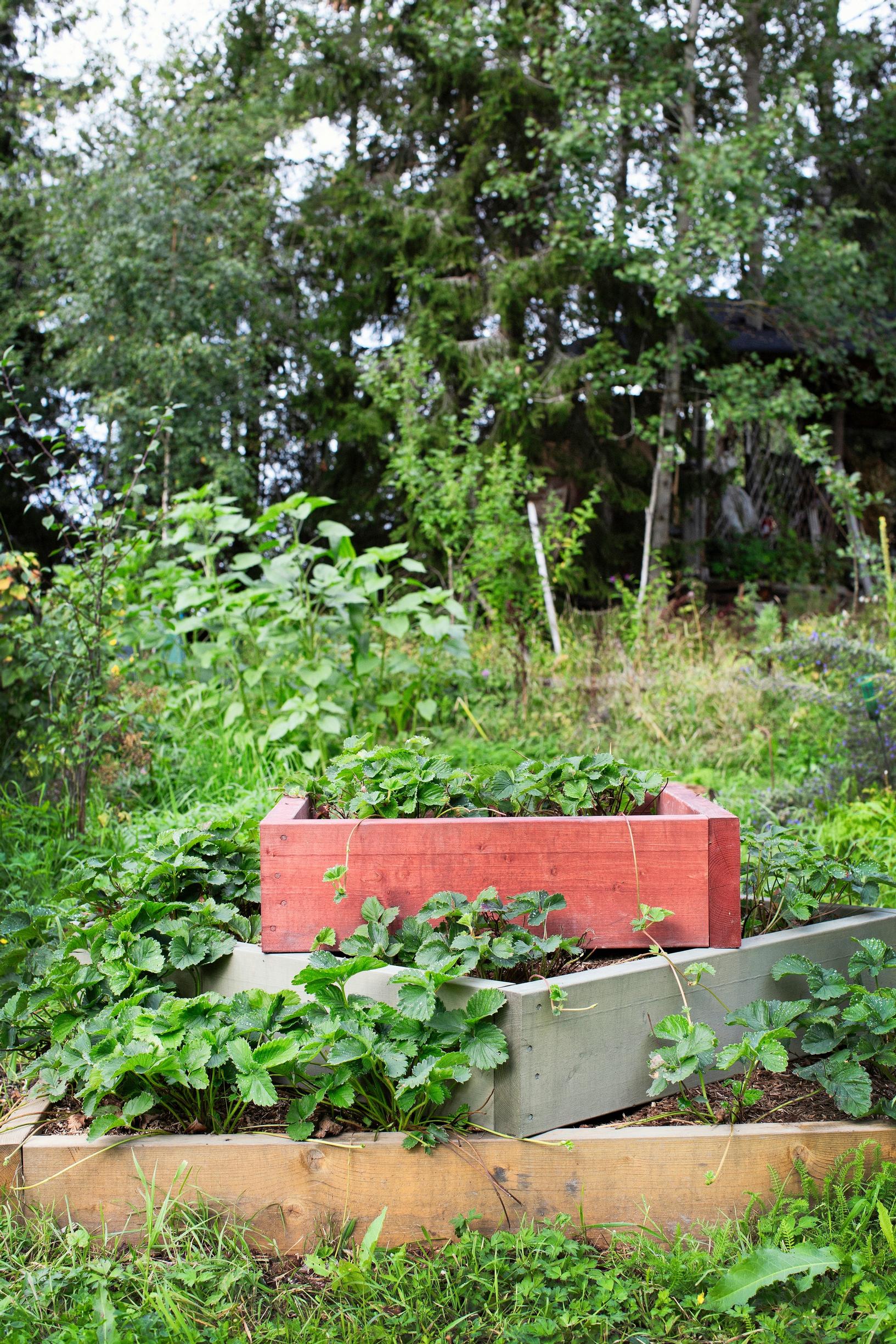
One year, we tried growing potatoes and outdoor cucumbers together. The idea was that potatoes would shelter the cucumbers early in the season, and once the potatoes were harvested, the cucumbers would have space to keep growing. It didn’t really work, so we ended up with a small cucumber harvest. Next time, we’ll plant them farther apart.
We bought our property, which we call Iso-Orvokkiniitty (Great Violet Meadow), seven years ago. Back then, it was just lawn and forest. We spent our first few years building our house and observing the site. We’ve planted gradually, and the garden is still evolving.
I’m an agrologist and horticulturalist, and Erkki is an agronomist, but this gardening project is still an experiment for both of us. Before this, we lived in an apartment building in Espoo.
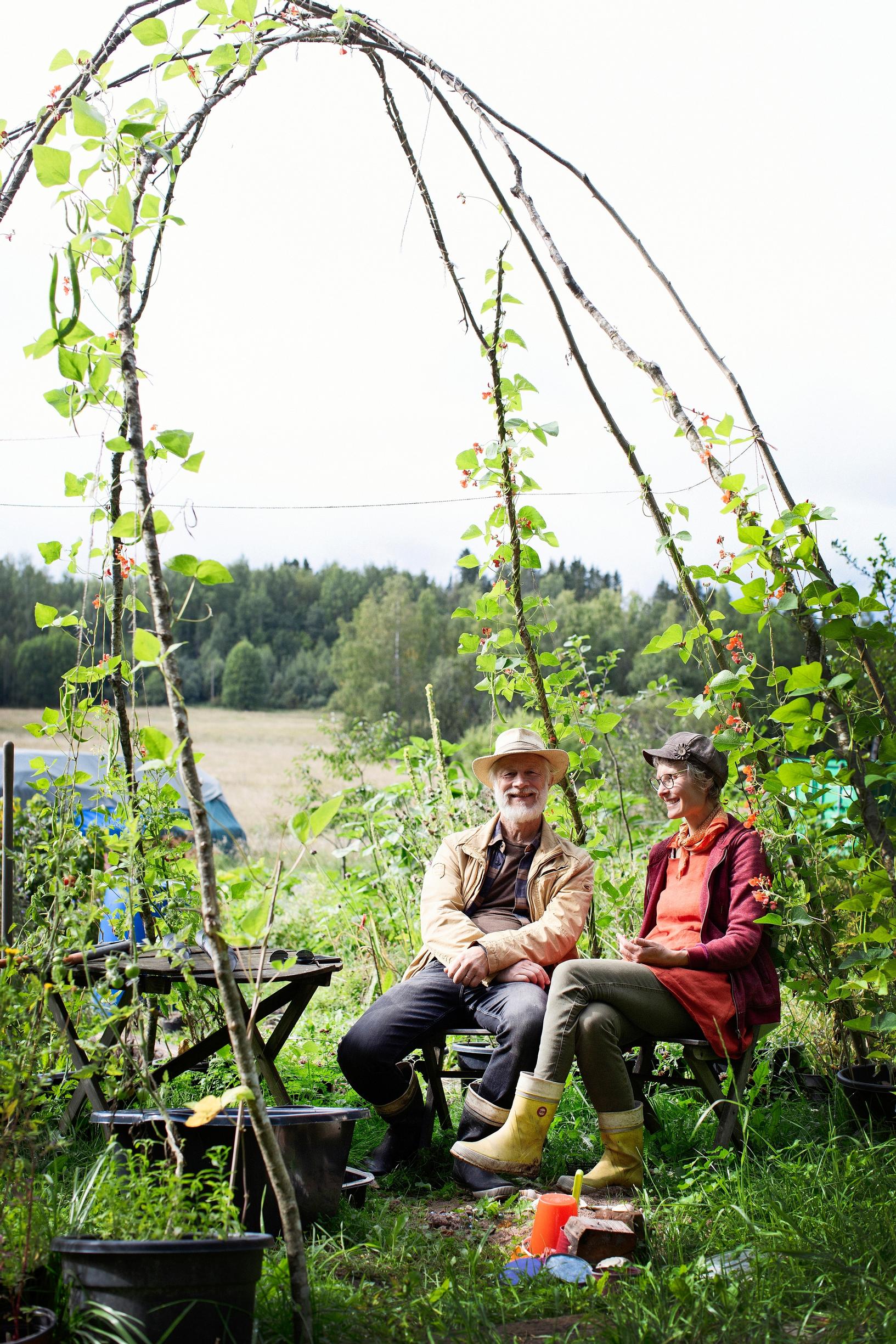
In the future, we want to include as many perennial crops as possible. They produce food with little intervention.
We’ve already planted various berry bushes and fruit trees along the yard’s edges: Chinese and Japanese kiwi vines, serviceberry, plums, pears, apples, currants, aronia, and even peach and apricot in a sheltered spot. We’re testing different plants to see what succeeds.
We also chose trees that can provide edible parts. Young linden and elm leaves can be used in early-summer salads, and linden blossoms make wonderful tea.
Erkki likes nuts, so he planted both wild and cultivated hazelnut shrubs (Corylus). In our yard, we have hornbeam and Turkish hazel, plus more than ten varieties of European hazelnut, including ‘Garibaldi’ and ‘Nottingham.’ We also have more than a dozen walnut trees (Juglans), such as Persian, American, and heartnut walnuts.
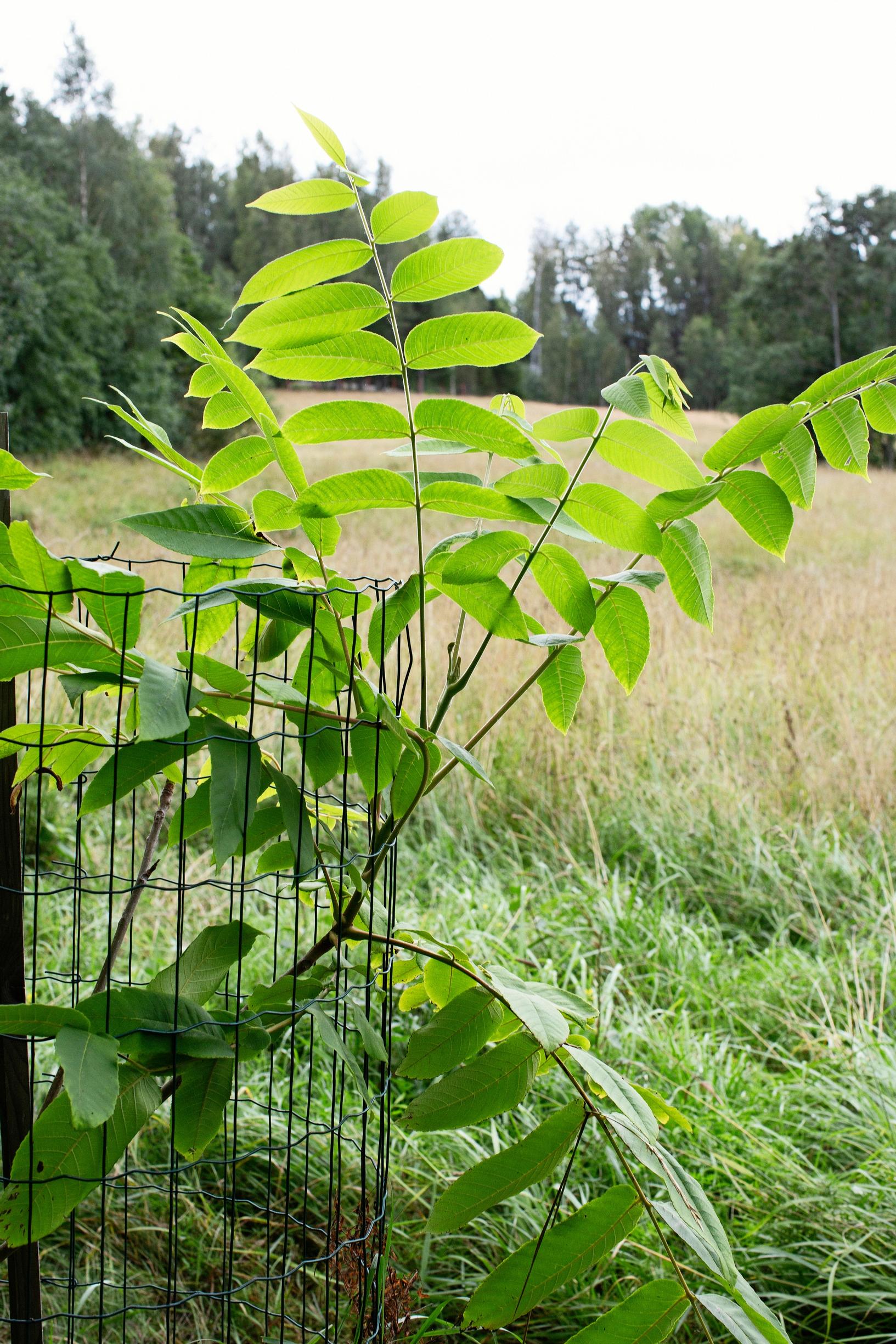
Producing all our own nuts would be fantastic, but walnuts especially can take around twenty years to bear fruit. We’ve already harvested wild European hazelnuts, though they’re smaller than the cultivated varieties.
Many ornamental plants, like hostas, are also edible. You can pick young shoots in early spring and cook them like asparagus. They’re typically harvested in late spring, making them a good option when other vegetables aren’t producing yet.
Marja and Erkki’s permaculture tips
- Get to know your garden. Observe it through the seasons and see how light and moisture vary. What kind of soil do you have? Base your plans on these observations.
- Make it easy to care for. Keep plants that need lots of tending near the house or at the front of the garden. The same applies to plants you harvest often: herbs, lettuce, greenhouse crops...
- Enrich the soil. Avoid deep or harsh tilling so you protect fungal mycelia and soil organisms. Use compost that includes, for example, organic horse or sheep manure. Cover with organic mulches like mild compost, straw, or grass clippings, and use more carbon-rich materials like sawdust or bark on pathways to foster fungal growth.
- Do it by hand. A core idea of permaculture is independence from fossil fuels, so skip gas-powered gear.
- Go step by step. Grow your garden gradually, so you can gauge your time and energy. You’ll be able to test different methods and find what works best for you.
- Try perennial vegetables. Many ornamental plants are edible, too. Large blue hosta shoots can be cooked like asparagus, and the leaves can be used fresh, cooked, or even as a sushi wrap. Daylily flowers are tasty raw or in soups and stews. Alaska clematis leaves and flowers work well in salads. You can keep collecting giant knotweed leaves late into autumn. They’re great raw or cooked.
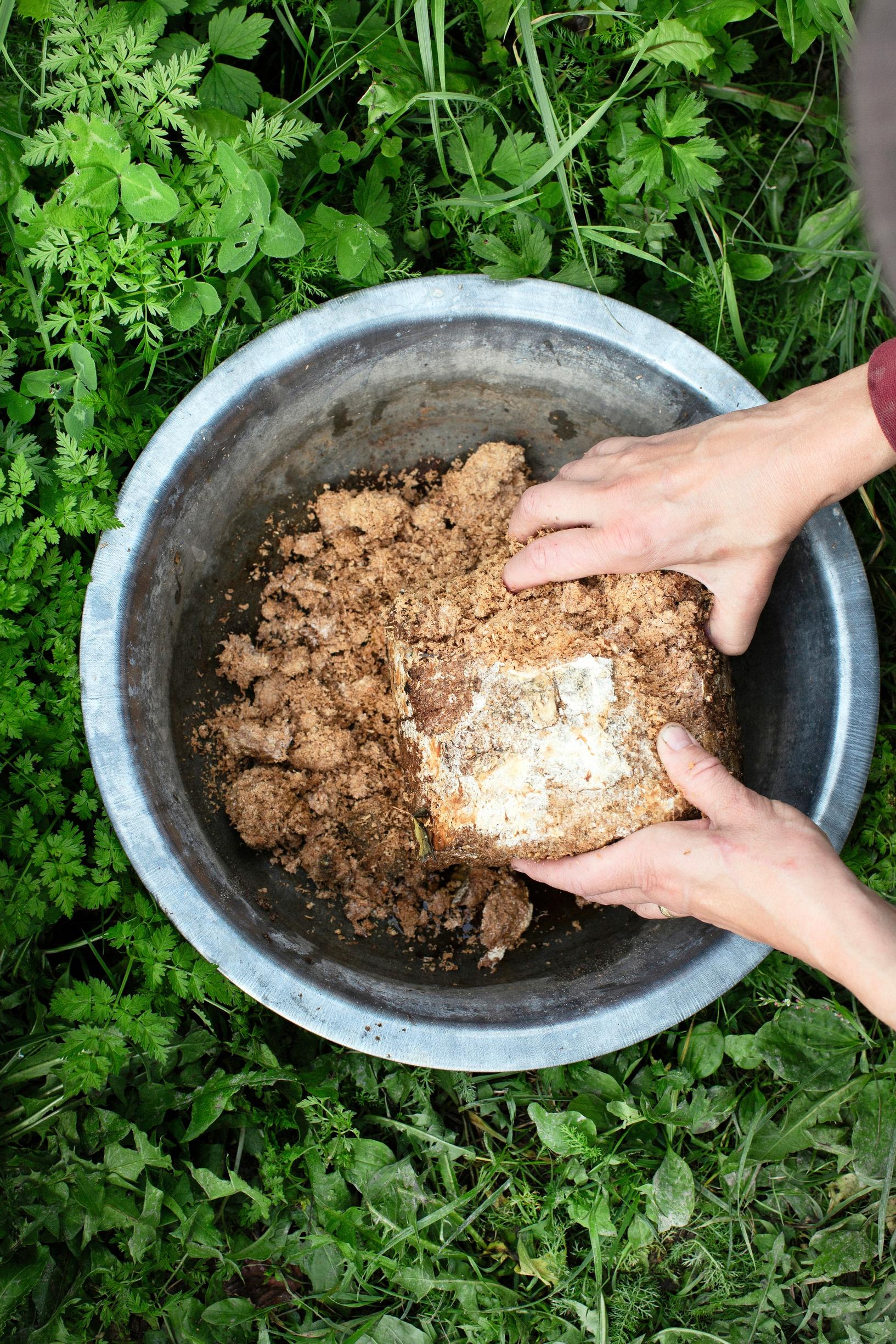
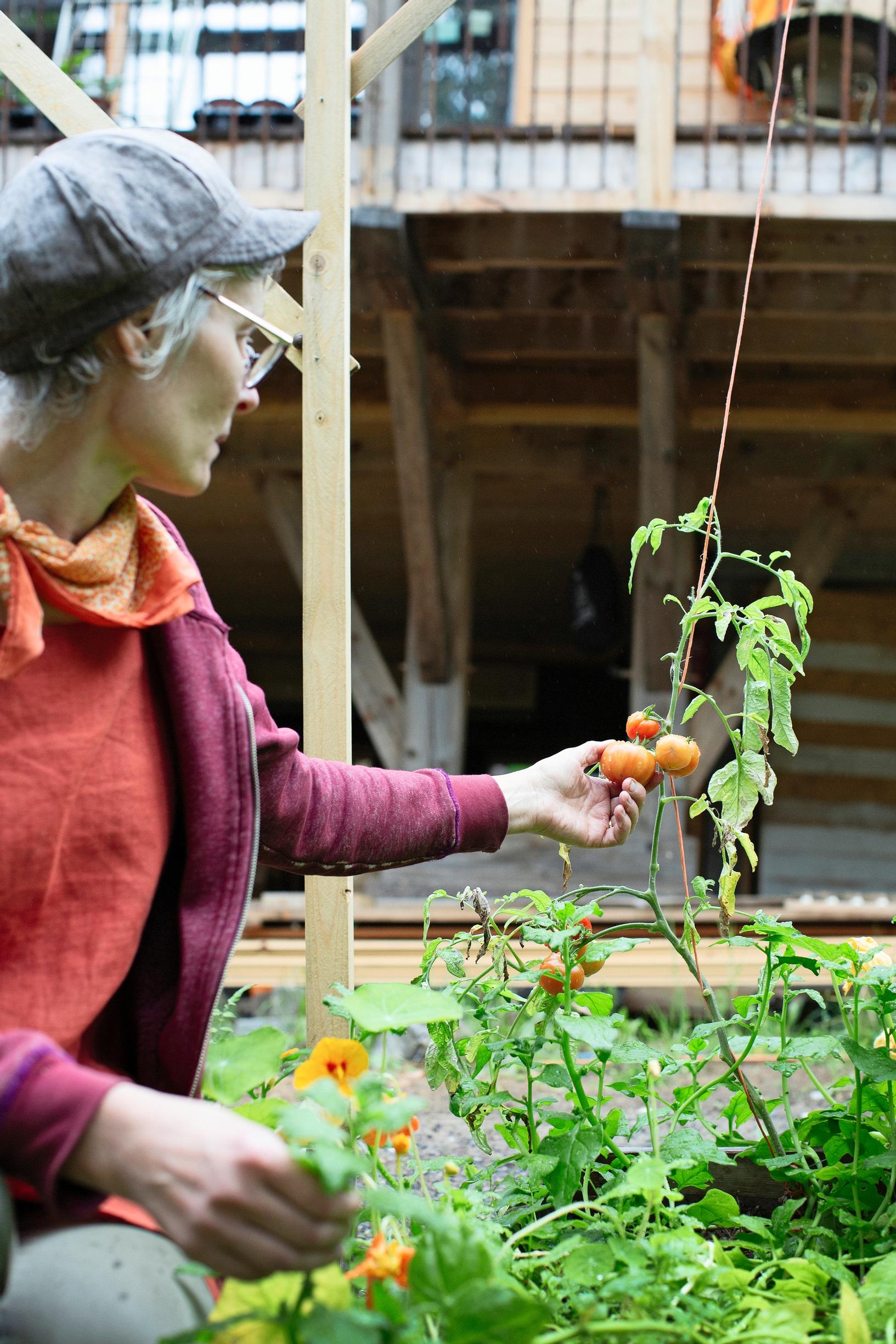
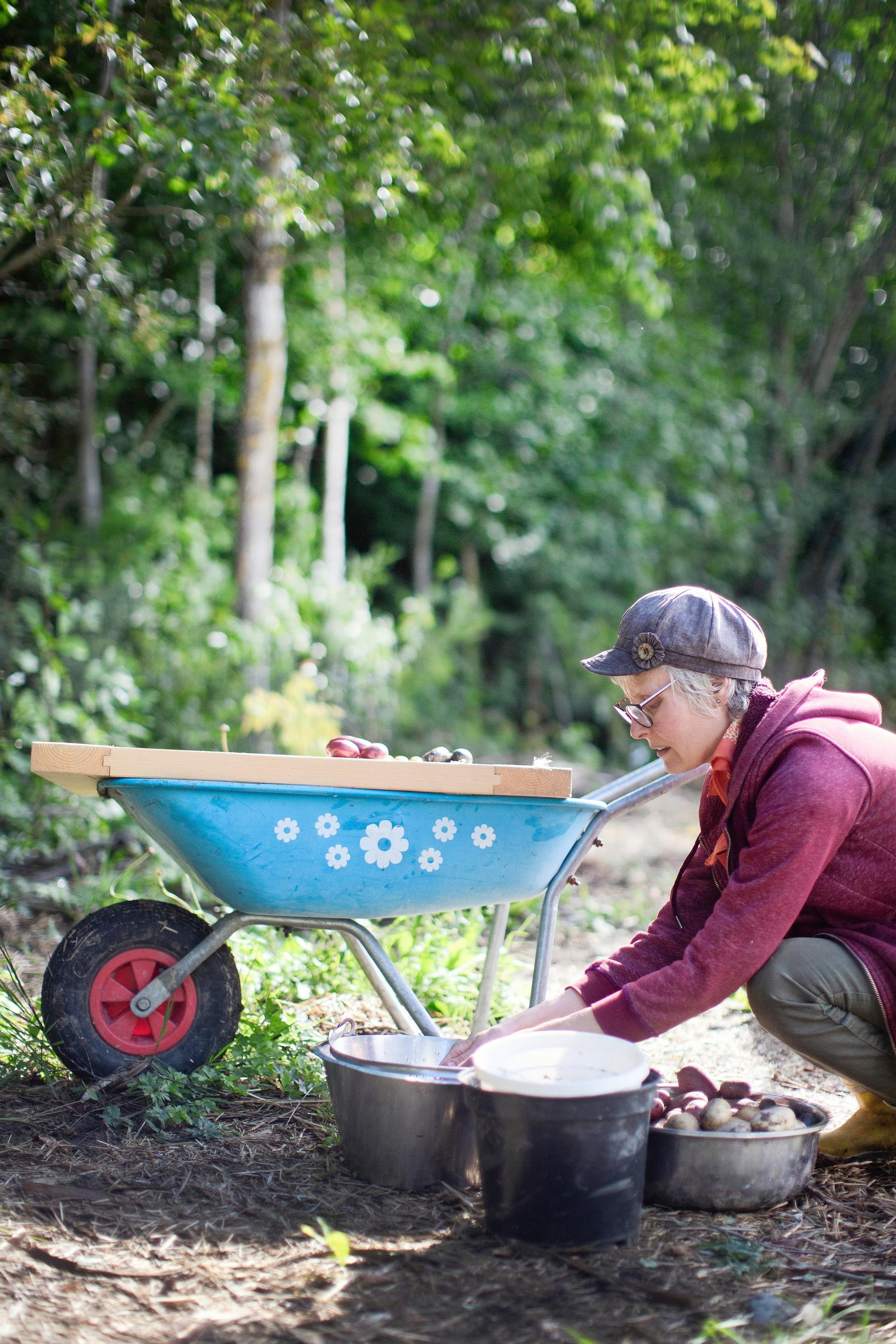
Check out the article on Marja and Erkki’s straw-clay house, where they also strive for self-sufficiency, including electricity—“We do laundry on windy days.”

Marja’s favorite potatoes
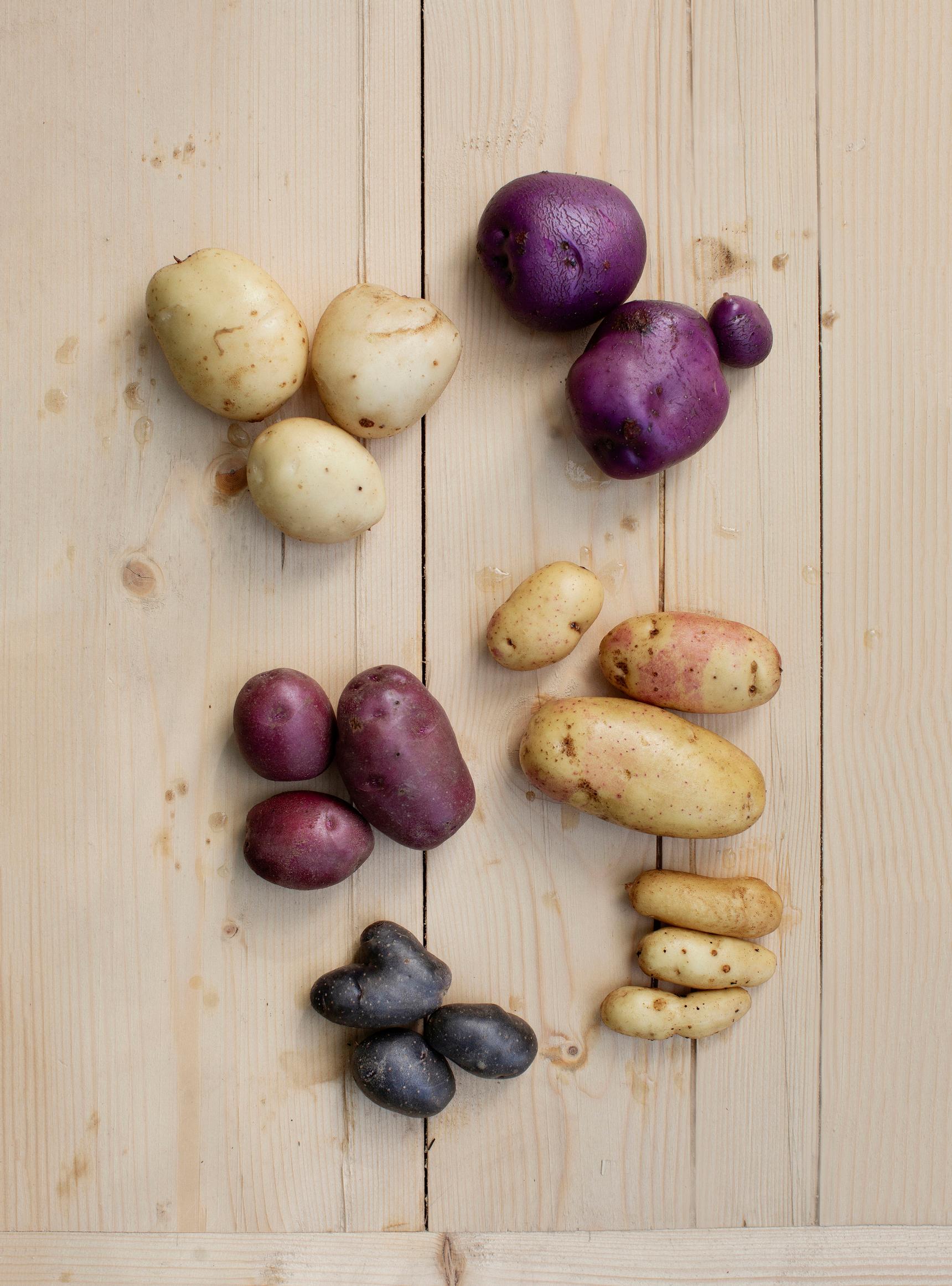
- ‘Casablanca’ A firm, early variety from Scotland. Shown top left.
- ‘Arran Victory’ A floury winter potato with red skin and pale flesh, moderate yield, and fairly large tubers. Shown top right.
- ‘Mulberry Beauty’ A new, disease-resistant variety that inherited its bold red color from older strains. Yields are moderate to good. Shown center left.
- ‘Inca Bella’ A mottled, floury summer potato that yields well and makes large tubers but is prone to scab. Shown center right.
- ‘Violet Queen’ Purple skin and flesh that turns the cooking water dark green. The small tubers are excellent with skins on, especially in potato salad. Shown bottom left.
- ‘Asparges’ A Danish autumn potato producing small tubers with a lovely flavor, perfect with skins on. Shown bottom right.
